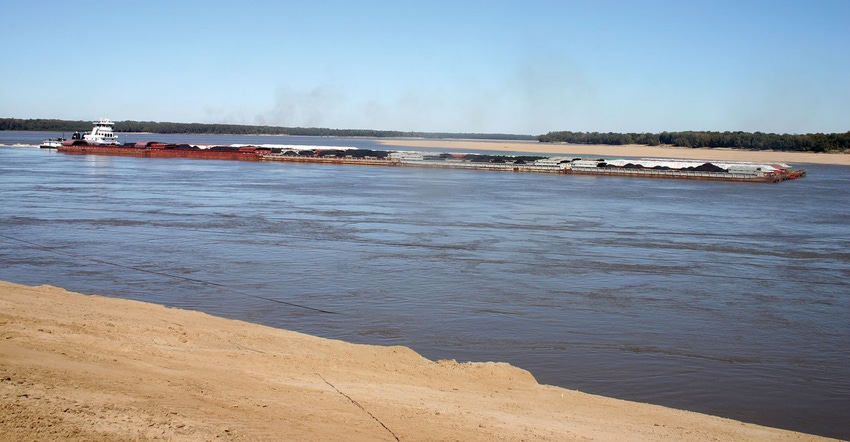
The day before the 57th Fisher Delta Research Center (FDRC) Field Day in Portageville, Mo., U.S.-based and privately held Palindromes, Inc., announced it will build a soybean processing plant and grain aggregation facility at the Pemiscot County Port Authority in Caruthersville, Mo.
For Trent Haggard, director of the FDRC, the announcement, and the news that Palindromes, Inc., will be sourcing a line of high-oleic soybeans developed using technology discovered and patented by Dr. Grover Shannon, emeritus professor, University of Missouri, and Dr. Kristin Bilyeu, molecular biologist, USDA/ARS, University of Missouri, brings a University of Missouri soybean breeding project full-circle.
“Some of the initial soybean lines bred and released at the Center were purchased by a commercial seed company that continues to improve and increase seed production to commercial volumes,” says Haggard. “The Palindromes announcement is exciting news for our Center, our soybean breeding program, Missouri soybean farmers, the city of Caruthersville, the surrounding communities, and every consumer who will benefit from this in the future.”
The local labor force and Caruthersville economy will benefit because the new processing facility will bring 63 new jobs to the region and the ancillary jobs created through the transportation of product coming out of the new facility via ground, river, and railroad, as well as the construction of the facility itself.
“On top of that, this should encourage many Missouri farmers to plant these high-oleic soybean varieties this new facility will want to crush,” adds Haggard. “It should also give our growers a contractual advantage, which is another added value at the end of this research and commercialization cycle.”
Development and Sustainability
More than a decade ago, Shannon and Bilyeu were working on a project to improve the quality of soybean oil. To do that, they had to influence (or change) the fatty acid profile of the oil. Fatty acids are the individual components that make up oils like soybean, olive or canola.
“Oleic acid is just one of those components,” says Bilyeu. “Its content in the profile normally averages around 23 percent, but our target was to raise it to greater than 70 percent.”
In 2015, the University of Missouri was granted a patent to develop a high-oleic soybean variety created from the genes discovered by Shannon and Bilyeu. The two scientists successfully “forward crossed” a high-oleic gene into a line Shannon found in a germplasm accession from the National Plant Germplasm collection, but it only increased the oleic acid content to around 28 percent.
After utilizing a variant gene from a mutant population discovered from another research project, they combined the two genes. “When we crossed the second high-oleic gene discovered in germplasm that happened to be grown in our winter nursery in Costa Rica, the oleic acid content jumped to over 80 percent,” says Shannon. “We had done it!”
Conventional breeding is a time-intensive process and may take a decade or more to back- and forward-cross germplasm before the desired traits are adequately expressed. The scientists knew they still had a lot of work to do. They had to eliminate undesirable traits which existed in the germplasm containing the one desirable oleic trait. “By 2013, we had cleaned up the genetic background which allowed us to be more efficient in our breeding efforts,” adds Bilyeu.
Crushing and Aggregating
Palindromes, Inc., considered several possible locations for the processing and grain aggregation facility, but the Pemiscot Port’s access to the Mississippi River with the confluence of three other rivers, the Missouri, the Illinois and the Ohio, made their decision almost too easy.
“Logistically, we feel like this location is perfect for the markets we intend to serve,” says Karla Klingner, CEO, Palindromes, Inc. “We wanted to have viable, shovel-ready access to the river south of the lock and dam, which will provide us a reach into all of the key production states up and down the waterway.”
It was important to have the facility located in an area protected from flooding. Palindromes, Inc., projects an investment of about $63 million in the operation that will include both storage and processing facilities. In addition to the high-oleic oil, they will attempt to carve their presence into niche markets.
“We’re currently working with the swine industry with plans to modify our proprietary feed formulas for the aquaculture and poultry industries in the region, adds Klingner. “We are targeting both domestic and international markets that demand specialty meats and are willing to award farmers with premiums for differentiated products.”
Their plans are to break ground on the storage facilities in time to accommodate deliveries for the 2019 harvest season. By the time the entire facility is operational, Palindromes, Inc., hopes to serve grower clients from the Dakotas to Georgia.
About the Author(s)
You May Also Like




